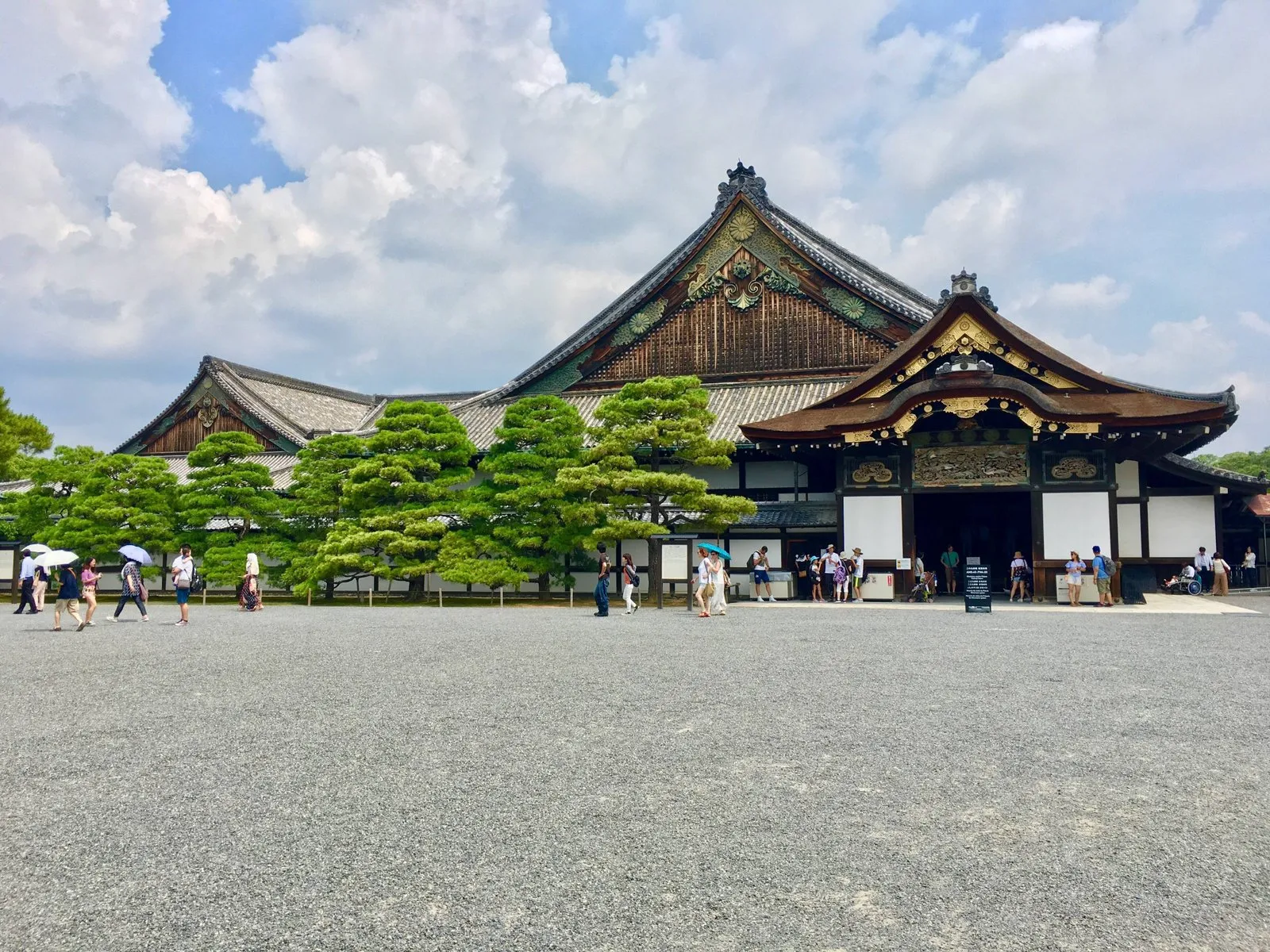

Nijo Castle
https://nijo-jocastle.city.kyoto.lg.jp/
Nijo Castle, located in the center of Kyoto City, is a historic Japanese castle whose history dates back to 1603, when Ieyasu Tokugawa ordered its construction. Kyoto has deep roots in imperial and courtly culture, and Nijo Castle was built as an important base for the Tokugawa shogunate to establish its political influence and facilitate relations with the emperor and court nobles. As such, Nijo Castle was designed less as a military fortress and more as an ornate symbol of authority and a place to show off the power of the shogunate. Many feudal lords were mobilized to build Nijo Castle, which featured solid stone walls and beautiful gardens. The original building was modest in scale and functioned mainly as a lodging facility for the shogun, but later renovations greatly expanded the building. In 1626, during the reign of Tokugawa Iemitsu, the third shogun, Nijo Castle underwent a major renovation. At this time, the buildings within the castle were expanded, including the “Ninomaru Goten” that still stands today. In addition, the defenses of the castle were strengthened and the gardens were given a more refined form. When Iemitsu traveled to Kyoto to meet officially with the emperor, Nijo Castle served as the stage for this meeting, demonstrating the prestige of the shogunate. Since this renovation, Nijo Castle has played an increasingly important role as a symbol of Tokugawa power in Kyoto. In the late Edo period, Nijo Castle was used less frequently as the authority of the shogunate declined. However, in 1867, a very important historical event took place here. That was the “Grand Seihokan” by the 15th Tokugawa shogun, Yoshinobu Tokugawa. This was a historic decision by the Tokugawa Shogunate to return power to the Imperial Court and return the right to govern Japan to the Emperor. This event led to the transfer of ownership of Nijo Castle from the Tokugawa Shogunate to the Meiji government, and the castle gained deep historical significance as a symbolic site of the transition from the end of the Tokugawa Shogunate to the Meiji Restoration. During the Meiji period, Nijo Castle temporarily became the property of the imperial family and was used as the Imperial Palace. Later, in 1893, the castle was transferred to the City of Kyoto to be preserved as a historical heritage site. in the 20th century, preservation efforts for Nijo Castle began in earnest, and in 1939 it was designated a national treasure, and in 1994 it was registered as a UNESCO world heritage site as a “cultural property of the ancient capital of Kyoto. The architecture of Nijo Castle is characterized by opulence and grandeur. In particular, the “Ninomaru Goten” (Imperial Palace) preserves the splendor and beauty of the Momoyama period. The interior of the palace is decorated with gold-leaf paintings and gorgeous decorations by painters of the Kano school. The garden is in the form of a circular garden, and visitors can enjoy a different atmosphere each season. Nijo Castle is an important historical site that tells the story of the Tokugawa Shogunate from its founding to its demise, and is an indispensable part of Japan's political, cultural, and architectural history. Throughout its long history, it has changed its role from a symbol of power to a place of change. Today, it is widely known as a tourist attraction, and continues to convey its historical value and beauty to many people.